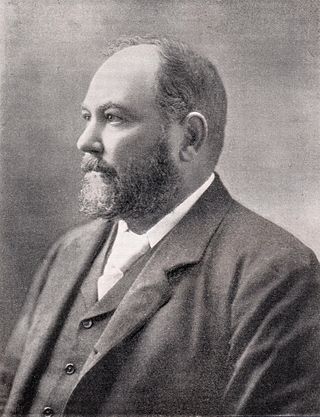Related Research Articles
The Western Australian Legislative Assembly is elected from 59 single-member electoral districts. These districts are often referred to as electorates or seats.
This is a list of members of the Western Australian Legislative Assembly between the 1890 elections and the 1894 elections, known as the First Parliament. They held office under the Constitution Act 1889, which was given royal assent by Queen Victoria on 15 August 1890 and took effect on 21 October 1890 with a proclamation by the new Governor of Western Australia, Sir William Robinson.
This is a list of members of the Western Australian Legislative Assembly between the 1894 elections and the 1897 elections, together known as the Second Parliament.
This is a list of members of the Western Australian Legislative Council from October 1870 to June 1872. The chamber had 18 members, as specified by the Legislative Council Act 1870. Section 1 of this Act specified that a minimum of one-third of the Council would be appointed by the Crown. Three of these were official nominees who were part of the Continuous Ministry—namely the Colonial Secretary, Attorney-General and the Surveyor-General—while the remaining three were "non-official nominees".

William Paterson was an Australian politician and businessman in Western Australia. He was a member of the unicameral Legislative Council from 1889 until its dissolution the following year, and then a member of the newly created Legislative Assembly from 1890 to 1895.
Albany was an electoral district of the Legislative Council of Western Australia from 1870 to 1890, during the period when the Legislative Council was the sole chamber of the Parliament of Western Australia.
Vasse was an electoral district of the Legislative Council of Western Australia from 1870 to 1890, during the period when the Legislative Council was the sole chamber of the Parliament of Western Australia.
Swan, officially called The Swan, was an electoral district of the Legislative Council of Western Australia from 1870 to 1890, during the period when the Legislative Council was the sole chamber of the Parliament of Western Australia.
Toodyay was an electoral district of the Legislative Council of Western Australia from 1870 to 1890, during the period when the Legislative Council was the sole chamber of the Parliament of Western Australia.
Wellington was an electoral district of the Legislative Council of Western Australia from 1870 to 1890, during the period when the Legislative Council was the sole chamber of the Parliament of Western Australia.
Geraldton was an electoral district of the Legislative Council of Western Australia from 1870 to 1890, during the period when the Legislative Council was the sole chamber of the Parliament of Western Australia.
The North, often known as North District or the Northern District, was an electoral district of the Legislative Council of Western Australia from 1874 to 1890, during the period when the Legislative Council was the sole chamber of the Parliament of Western Australia.
Gascoyne was an electoral district of the Legislative Council of Western Australia from 1883 to 1890, during the period when the Legislative Council was the sole chamber of the Parliament of Western Australia.
Kimberley was an electoral district of the Legislative Council of Western Australia from 1887 to 1890, during the period when the Legislative Council was the sole chamber of the Parliament of Western Australia.
Greenough was an electoral district of the Legislative Council of Western Australia from 1870 to 1890, during the period when the Legislative Council was the sole chamber of the Parliament of Western Australia.
York was an electoral district of the Legislative Council of Western Australia from 1870 to 1890, during the period when the Legislative Council was the sole chamber of the Parliament of Western Australia.
Perth was an electoral district of the Legislative Council of Western Australia from 1870 to 1890, during the period when the Legislative Council was the sole chamber of the Parliament of Western Australia.
Fremantle was an electoral district of the Legislative Council of Western Australia from 1870 to 1890, during the period when the Legislative Council was the sole chamber of the Parliament of Western Australia.

Elections were held in the Colony of Western Australia in December 1890 to elect 30 members to the Legislative Assembly. They were the first elections to be held for the Legislative Assembly, which had been created earlier in the year by a new constitution that granted Western Australia responsible self-government.

Elections were held in the Colony of Western Australia in June and July 1894 to elect 33 members to the Legislative Assembly. Less than half of the seats were contested and virtually all campaigns were fought on local issues, although a few candidates were endorsed by extraparliamentary organisations. The election presented no threat to the government of Sir John Forrest, but its aftermath saw the establishment of a credible opposition for the first time, led by George Randell.
References
- ↑ Legislative Council (37 Vict. No. 22), Western Australian Numbered Acts, AustLII. Retrieved 6 June 2016.
- ↑ The Western Australian Parliamentary Handbook (Twenty-Third Edition) Archived 2016-03-03 at the Wayback Machine , p. 370.